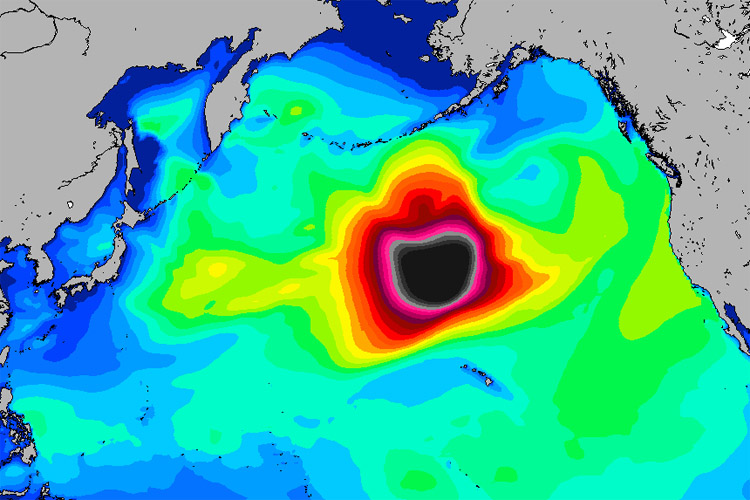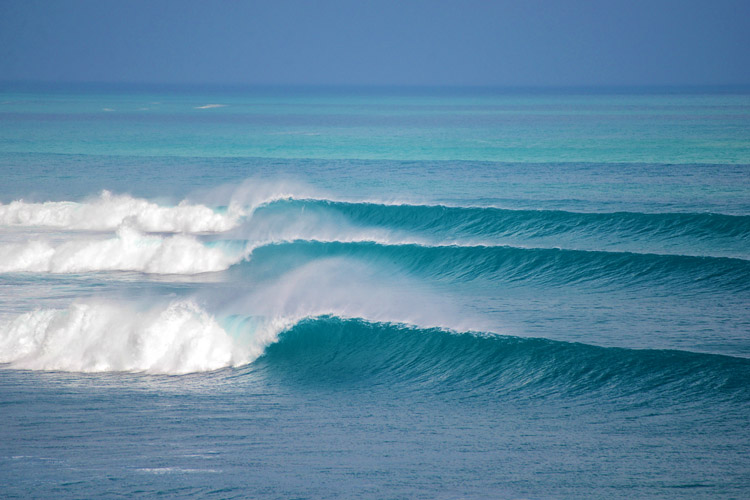What is the definition of groundswell? Why do surfers prefer long-period waves? Learn why groundswells are better for surfing.
Swells form when the wind, at a certain speed, duration, and direction, blows over a distance of water called the fetch. When the first waves form, they begin to travel faster or slower, depending on the ocean and wind conditions.
A groundswell, or ground swell, is a long-period group of waves created by a distant storm system over long distances, at least 2,000 miles away from the coast.
The majority of groundswells are produced by mid-latitude depressions between 30 and 60 degrees and travel from west to east, swinging towards the Equator.
European surf breaks are often blessed by North Atlantic low-pressure systems, while California and Hawaii receive these consistent ocean swells when they're generated in the North Pacific.
Groundswell waves are faster, further apart, less steep, thicker, and more powerful than short-period swells created by local winds. Long-period waves also break in shallower waters.

Long Wave Period Wave Trains
A groundswell is often identified by a wave period of more than 15 seconds, while locally generated wind swells have a time between waves of less than 11 seconds.
The groundswell owes its name to the fact the energy of long-period waves extends down and comes into contact with the ocean floor earlier, at a depth of around 1,000 feet, while wind swells only touch the bottom of the sea at about 50 feet.
Groundswells have always been connected with exceptional surfing conditions because long-period waves travel from a long distance and carry a lot of energy.
When they arrive at our surf spots, groundswell waves appear clean, spaced, powerful, and ready to be ridden by surfers.
Are you into surf science? Take a look at the glossary of surf forecasting terms.
